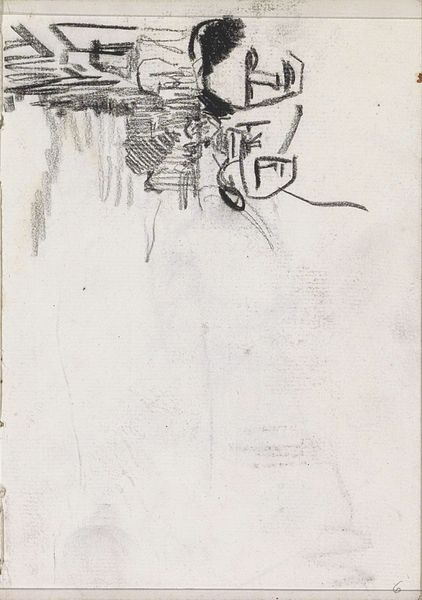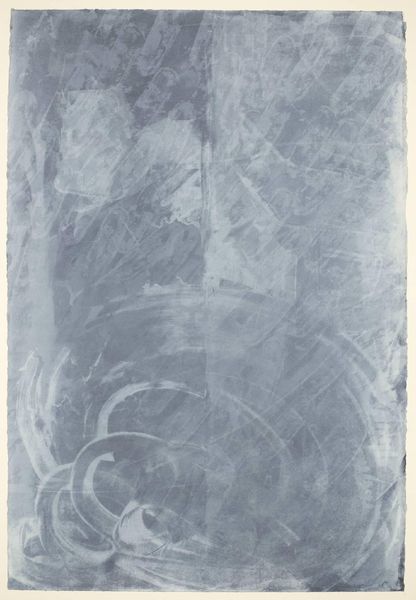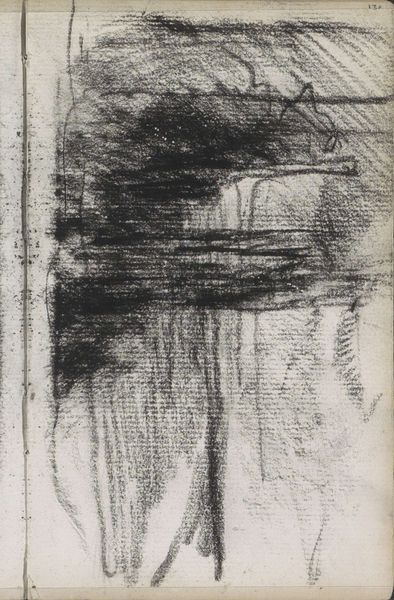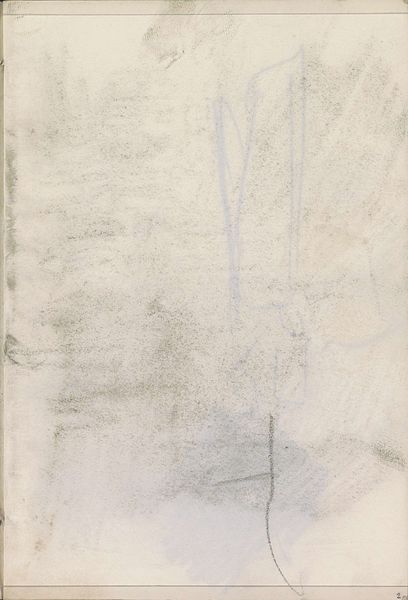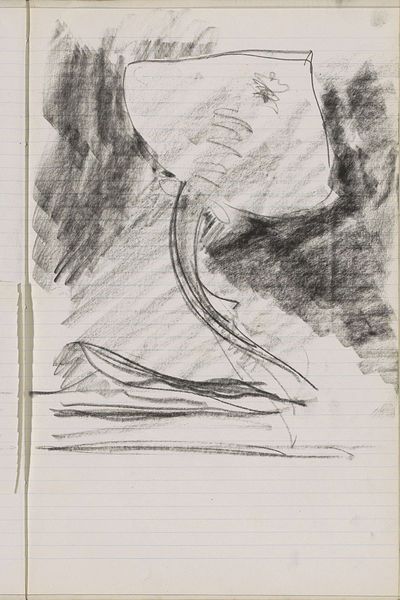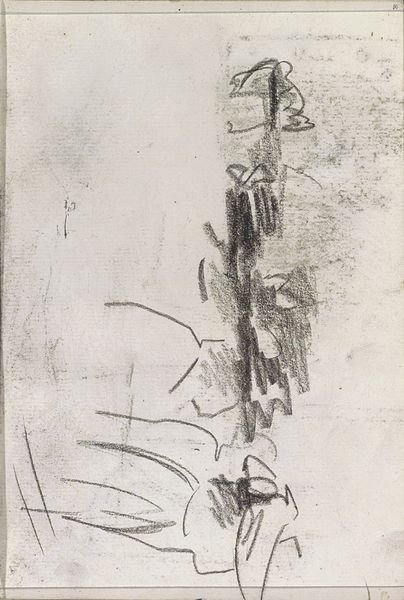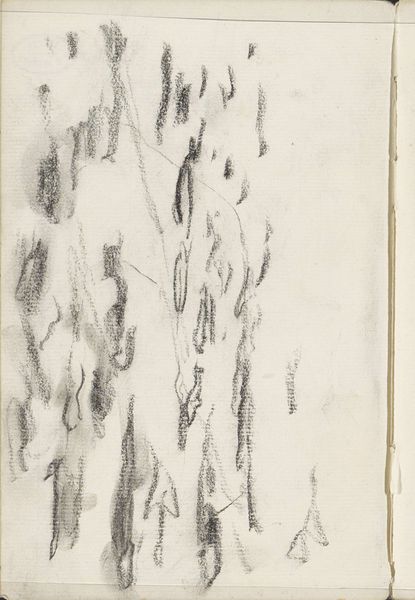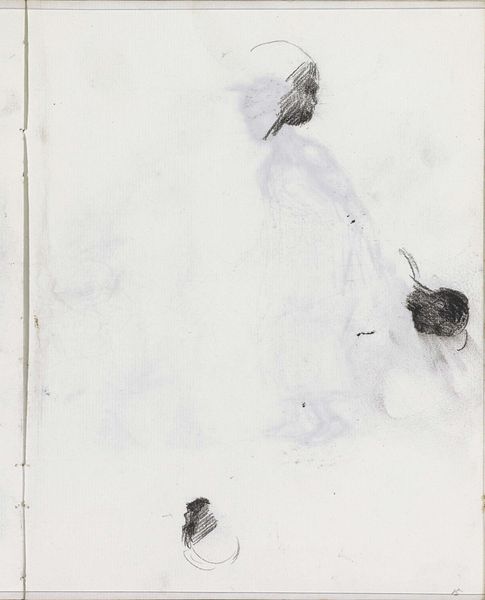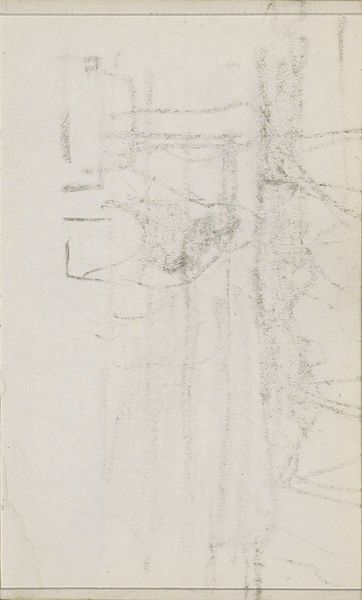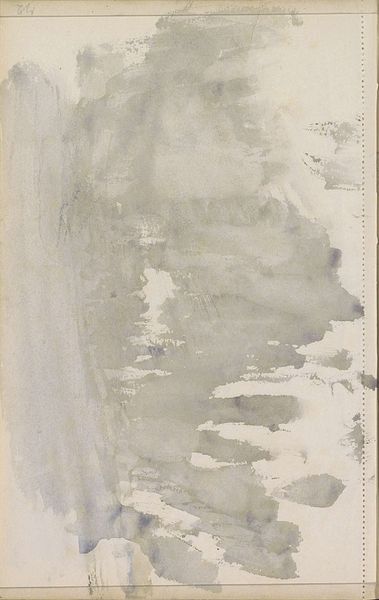
Copyright: Rijks Museum: Open Domain
Editor: We’re looking at ‘Studie,’ a pencil drawing by Isaac Israels, created sometime between 1886 and 1934. The sketch is mostly empty, with some dark lines and smudges on the left side. It has an unfinished, almost haunting quality. What do you see in this piece? Curator: It's interesting to consider this drawing purely from the standpoint of its formal qualities. Note the stark contrast between the densely worked graphite on the left and the largely untouched space on the right. Consider how the artist creates tension and visual interest simply through the juxtaposition of mark-making and void. Editor: So, it’s about the balance – or imbalance – of those elements? Curator: Precisely. It invites contemplation on the nature of perception itself. What constitutes an image? Where does form begin and end? How much information is needed to suggest a landscape or, perhaps, even a figure obscured by shadow? Editor: The “empty” space, then, isn’t really empty. It’s as important as the lines. Curator: Precisely. Semiotically, we might examine the function of absence as a signifier. The blank space becomes charged with potential, inviting the viewer to actively participate in the completion of the work. What are your thoughts? Editor: It’s almost a collaboration with the artist, then, our minds filling in the blanks. That tension you mentioned definitely draws you in. I see the technique more now. Curator: Indeed. A formalist lens directs our gaze inward, towards the intrinsic elements, allowing us to appreciate the drawing not merely as a representation, but as an autonomous object of aesthetic inquiry.
Comments
No comments
Be the first to comment and join the conversation on the ultimate creative platform.
